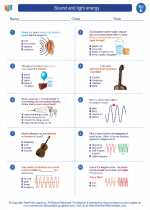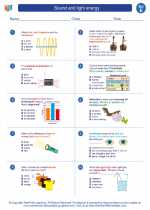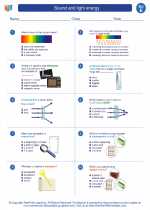Sound and light energy -> heredity
What is Heredity?
Heredity refers to the passing on of genetic traits from parents to their offspring. These traits are determined by the genes, which are the units of heredity that are located on the chromosomes.
Gregor Mendel and the Laws of Heredity
Gregor Mendel, an Austrian monk, is often referred to as the "father of modern genetics" for his work on heredity in pea plants. He discovered the basic principles of heredity through his experiments, which laid the foundation for our understanding of how traits are inherited.
Genes and Alleles
Genes are the units of heredity that are responsible for the inheritance of traits. Each gene can have different forms, which are called alleles. For example, the gene for eye color may have alleles for blue, brown, or green eyes.
Chromosomes and Inheritance
Chromosomes are thread-like structures found in the nucleus of cells that contain the genetic information. Humans have 23 pairs of chromosomes, with one chromosome in each pair inherited from each parent. The inheritance of traits is determined by the combination of genes on these chromosomes.
Punnett Squares and Probability
Punnett squares are used to predict the possible outcomes of a genetic cross between two individuals. This tool allows us to determine the probability of certain traits being inherited by offspring based on the genotypes of the parents.
Genetic Disorders and Heredity
Some traits and genetic disorders are inherited from parents to offspring. These can be caused by mutations in the genes that result in abnormal traits or health conditions. Understanding heredity helps in the study and treatment of genetic disorders.
Environmental Influence on Heredity
While heredity plays a significant role in determining traits, environmental factors can also influence how traits are expressed. For example, nutrition, exposure to toxins, and other environmental factors can affect the expression of certain genes.
[Heredity] Related Worksheets and Study Guides:
.◂Science Worksheets and Study Guides Fifth Grade. Sound and light energy

 Activity Lesson
Activity Lesson
 Worksheet/Answer key
Worksheet/Answer key
 Worksheet/Answer key
Worksheet/Answer key
 Worksheet/Answer key
Worksheet/Answer key
 Worksheet/Answer key
Worksheet/Answer key
 Vocabulary/Answer key
Vocabulary/Answer key
 Vocabulary/Answer key
Vocabulary/Answer key
